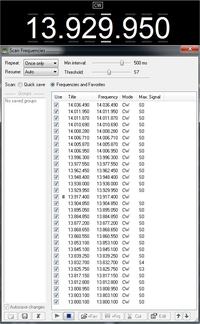Audioguru
Advanced Member level 7

- Joined
- Jan 19, 2008
- Messages
- 9,461
- Helped
- 2,152
- Reputation
- 4,304
- Reaction score
- 2,011
- Trophy points
- 1,393
- Location
- Toronto area of Canada
- Activity points
- 59,764
A ferrite bar antenna is used for the AM broadcast band up to 1600kHz but might work at frequencies a little higher.
VHF and UHF need an antenna with a wire or whip at a suitable length for each frequency.
VHF and UHF need an antenna with a wire or whip at a suitable length for each frequency.



